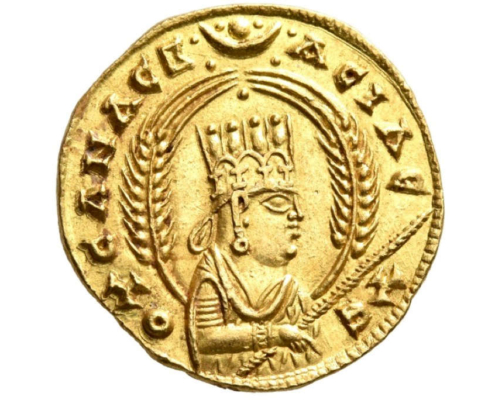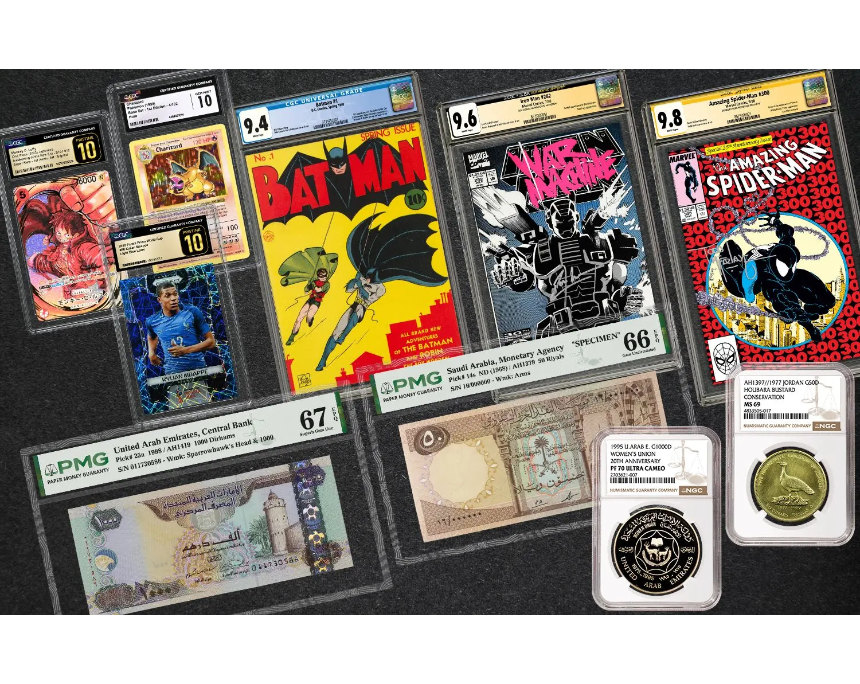Friedrich Wilhelm, the Great Elector.
Ducat 1686 LCS, Berlin.
Extremely rare.
Attractive piece.


Maximilian II.
Ducat 1855.
Only a few pieces are known.
Extremely fine-uncirculated.

Ferdinand Albrecht I.
Löser in the weight of 4 Reichstalers 1670, Clausthal.
Extremely rare.
Attractive piece.

Friedrich Adolf.
5 Ducats 1711, Detmold.
Only known piece.
Extremely fine-uncirculated.

6 Ducats, n. d. (1765-1790), with the title of Joseph II.
NGC MS 62 PL.
Extremely rare.
Attractive piece from polished dies.
Almost uncirculaed.

Johann Adolf, 1590-1616.
Portugalöser (10 ducats) n.d., Eutin.
Extremely rare and of particular
significance in monetary history.
Attractive piece.

Leopold I, 1657-1705.
20 Ducats, n. d. (after 1666), Hall,
by M. König.
Extremely rare.
Almost extremely fine.

Archive: People and Markets
Certified Collectibles Group Opens Office in Dubai
The Certified Collectibles Group has opened an office in Dubai. Collectors and dealers in the Middle East now have easier access to expert authentication, grading and encapsulation services provided by NGC, PMG, CGC and JSA.
Cristiano Ronaldo on a Commemorative Coin from Portugal? Controversy Surrounds an AI Fake
A purported special edition coin honouring the world-famous football icon is making headlines. However, it’s unlikely that Ronaldo and his peers will ever appear in your change – and there are compelling reasons for this.
Archive: Coins, Medals and more

An Introduction to Axumite Coinage
With the collection of Dr. Stephan Coffman, a highly significant ensemble of coins from the great ancient African kingdom of Axum is sold at Leu Numismatik. Learn more about the history of Axum and the often disregarded Axumite Coinage in this detailed article.

The Olympic Games That Are No Longer Recognized
In 1906, the IOC and the country of Greece invited athletes from all over the world to the Olympic Games in Athens. The Games had a lasting impact on the ceremonies surrounding the sporting showdown, even though the IOC no longer recognizes these Olympics today. A winner’s medal from the Games will be auctioned by Künker on 18 June 2024.













King Felipe Unshaven: New Commemorative Coins from Spain
Spain has presented its first commemorative coins for 2024 – and the designs show an interesting detail.
50 Years of Membership: PNG Honors Past President Gillio
At this year’s Pittsburgh World’s Fair of Money, the former president of the Professional Numismatists Guild, Ronald J. Gillio, was honored for his membership and service.